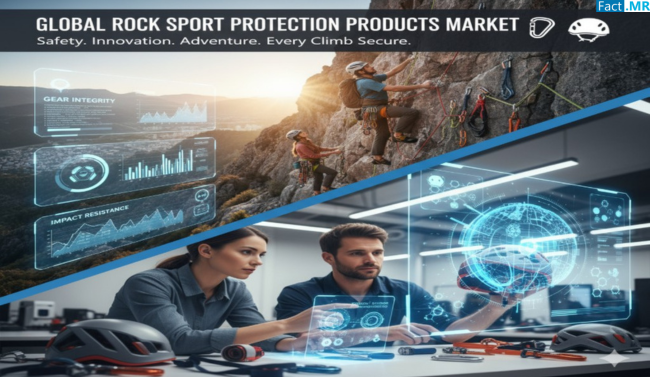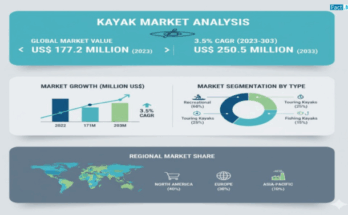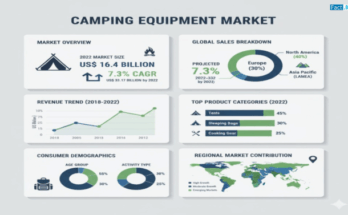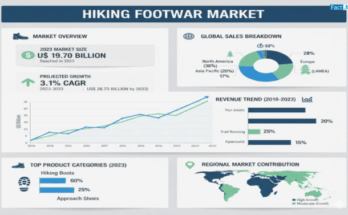Adventure sports, particularly rock climbing, have witnessed a surge in popularity worldwide. While these activities offer excitement, fitness benefits, and personal achievement, they also carry inherent risks such as falls, injuries, and accidents. To mitigate these risks, rock sport protection products have become indispensable. The market for helmets, climbing shoes, belay gloves, nuts, hexes, camming devices, and tricams has expanded significantly as consumers, clubs, and organizations prioritize safety.
Rock sport protection products not only reduce the likelihood of injuries but also instill confidence among participants, enabling them to enjoy the activity fully. The market continues to evolve as climbing gains traction both as a recreational activity and a competitive sport. Enhanced awareness about athlete safety, advancements in protective gear, and the growth of climbing tourism contribute to the steady adoption of these products across the globe.
Market Overview
Rock sport protection products encompass a range of equipment designed to protect climbers from falls, impact injuries, and environmental hazards. Key products include:
- Helmets: Essential for head protection during climbs.
- Climbing Shoes: Provide grip, balance, and comfort.
- Belay Gloves: Reduce friction and prevent rope burns.
- Nuts, Hexes, Camming Devices, Tricams: Used for securing climbers to rock surfaces.
The market is fueled by the increasing number of participants in rock sports, the rise of indoor climbing gyms, and the promotion of outdoor adventure tourism. Consumers now prefer high-quality, durable, and ergonomically designed protective products that enhance performance while ensuring safety.
Retailers and manufacturers are responding to demand with innovations in lightweight materials, sustainability, and customizable designs to cater to various climbing styles and skill levels.
Regional Insights
The adoption of rock sport protection products varies across regions due to cultural, regulatory, and recreational differences.
- North America: The United States is the largest market in this region. Government initiatives promoting outdoor activities and climbing events have increased consumer spending on protective gear. Popular climbing destinations like Yosemite, Red Rock, and Joshua Tree contribute to heightened demand.
- Europe: Countries such as France and Germany exhibit strong growth due to established climbing communities, competitive events, and public awareness campaigns emphasizing safety. The popularity of national and international competitions has further driven the adoption of protective equipment.
- Asia-Pacific: Emerging interest in rock sports in countries like Japan, South Korea, and India is fueling market growth. Indoor climbing facilities, adventure tourism, and lifestyle trends promoting fitness and outdoor experiences are contributing factors.
- Rest of the World: Markets in Latin America, the Middle East, and Africa are witnessing gradual growth as adventure tourism gains popularity, and more recreational facilities adopt safety protocols.
Key Trends & Market Drivers
- Rising Popularity of Rock Climbing
Rock climbing is increasingly seen as both a recreational and competitive sport. Adventure tourism packages often include climbing activities, increasing the visibility and adoption of protective products. Artificial climbing walls in malls, gyms, and adventure parks have also contributed to broader participation.
- Safety Awareness & Regulations
Sports federations and adventure clubs emphasize the use of protective equipment to prevent injuries. Regulatory guidelines for climbing competitions and safety standards for recreational climbing are creating a consistent demand for certified and high-quality gear.
- Product Innovation & Technological Advancements
Advances in materials, ergonomics, and design are driving product innovation. Lightweight helmets, breathable climbing shoes, and durable camming devices enhance both comfort and performance. Manufacturers are also focusing on eco-friendly and sustainable materials to meet consumer expectations.
- Growth of Indoor Climbing Facilities
Indoor climbing gyms are becoming popular worldwide, serving both beginners and professional athletes. These facilities often require climbers to use helmets, shoes, and belay gloves, thus driving consistent demand for protection products.
- Integration with Adventure Tourism
Countries promoting adventure tourism create new markets for protective gear. Travel packages combining climbing, hiking, and mountaineering activities encourage participants to invest in proper safety equipment, further boosting the market.
Applications & End-Use Outlook
Rock sport protection products cater to various end-use segments:
- Recreational Climbers: Individuals participating in outdoor and indoor climbing for fitness, leisure, and adventure.
- Competitive Athletes: Professional climbers and teams require high-performance protective equipment to comply with competition standards.
- Adventure Clubs & Gyms: Indoor climbing facilities and training centers require safety gear for their members.
- Tourism & Travel Operators: Providers of adventure packages encourage clients to use protective equipment, often including rentals or sales of helmets, shoes, and belay gloves.
This diverse user base ensures steady demand and encourages manufacturers to provide a wide range of products tailored to skill levels, climbing environments, and user preferences.
Challenges & Market Restraints
- Quality Concerns
The availability of low-cost, substandard protective products can hinder market growth. Inferior materials may fail under stress, leading to injuries and loss of consumer confidence. High-quality standards are critical for maintaining trust and safety.
- High Cost of Premium Gear
High-performance products with advanced safety features and materials can be expensive, limiting access for casual climbers or beginners. Price-sensitive consumers may opt for lower-cost alternatives, impacting the adoption of premium products.
- Training & Awareness
Even with quality equipment, inadequate knowledge about proper use can reduce effectiveness. Training programs and awareness campaigns are necessary to ensure that climbers use protective gear correctly.
- Supply Chain Challenges
Global supply chains for specialized climbing equipment may face disruptions due to manufacturing delays or material shortages, potentially affecting product availability in certain regions.
Country-Wise Insights
United States
The U.S. market leads in North America due to strong participation in climbing activities, robust adventure tourism infrastructure, and government support for outdoor recreation. The presence of world-renowned climbing destinations increases consumer investment in protective gear.
France
France has a rich climbing culture, with numerous natural climbing sites in the Pyrenees and Alps. National and international competitions attract athletes and enthusiasts, boosting demand for protective products.
Other Regions
- Germany & UK: Advanced sports culture and indoor climbing facilities drive adoption.
- Asia-Pacific: Emerging interest in climbing, tourism, and fitness trends is expanding market potential.
- Middle East & Latin America: Adventure tourism growth supports niche demand for safety products.
Product-Wise Insights
- Helmets: Helmets are the most critical component of protective gear, offering essential head protection. Demand for lightweight, durable, and ventilated helmets continues to grow.
- Climbing Shoes: Shoes designed for grip, comfort, and precision climbing are increasingly popular among recreational and competitive climbers.
- Belay Gloves: Gloves prevent rope burns and enhance grip, with rising adoption in indoor gyms and professional settings.
- Camming Devices, Nuts, Hexes, Tricams: These products provide safety anchors during climbing and are essential for risk mitigation, particularly in outdoor climbing environments.
Competitive Landscape
Key market players are focusing on innovation, quality, and brand recognition. Leading companies include:
- Amer Sports Corporation
- Black Diamond Equipment Corp
- CAMP USA
- Decathlon S.A.
- EDELRID GmbH & Co. KG
- Evolv Sports
- Mammut
- Metolius Climbing
Strategies adopted by these players include:
- Product innovation with lightweight, ergonomic, and sustainable designs.
- Expansion of distribution channels to retail stores, online platforms, and adventure centers.
- Marketing campaigns emphasizing safety, quality, and performance.
Future Outlook
The rock sport protection products market is expected to grow steadily, driven by:
- Rising interest in adventure sports and climbing activities.
- Growth of indoor climbing facilities and adventure tourism.
- Technological innovation in protective gear materials and design.
- Increased awareness about safety and compliance with international standards.
Manufacturers focusing on premium quality, durability, and customization will be well-positioned to capture emerging opportunities. Additionally, sustainability and eco-friendly designs will play a key role in attracting environmentally conscious consumers.
Conclusion
The rock sport protection products market reflects a global trend toward safer and more enjoyable adventure sports. From helmets to climbing shoes and advanced camming devices, protective products are integral to reducing risks and enhancing the climbing experience. Market growth is supported by increasing participation in climbing, indoor gym adoption, adventure tourism, and heightened safety awareness.
As the market evolves, innovation, quality, and consumer education will remain central to driving adoption. Stakeholders, including manufacturers, retailers, and sports organizations, can capitalize on this growth by prioritizing performance, safety, and sustainability, ensuring that adventure sports enthusiasts can climb confidently and safely.



